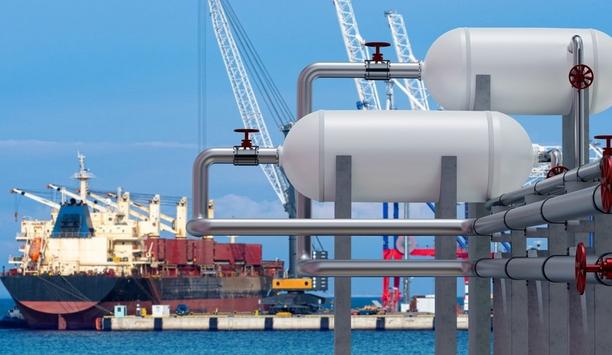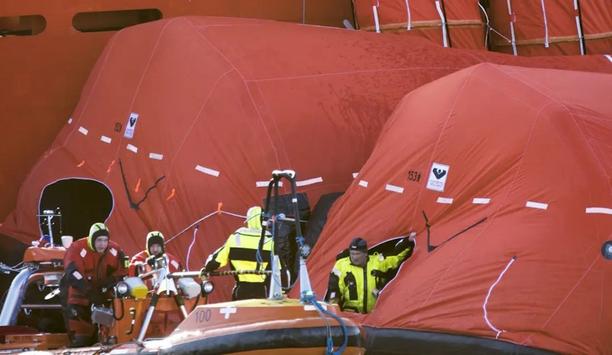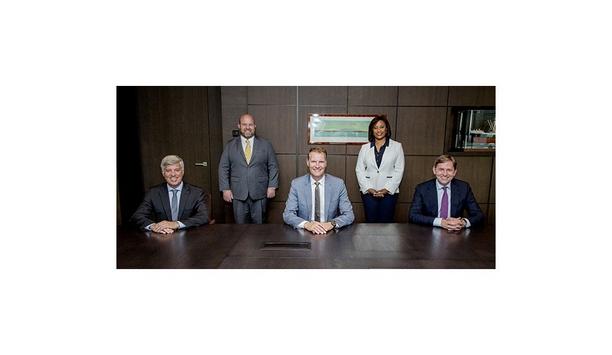Maersk remains committed to ensuring the supply chain needs are met in this period of uncertainty and intensified congestion all around the globe. In this Asia Pacific Market Update, Maersk provides the most relevant and up-to-date information as Maersk navigates this period of heightened volatility together to keep the supply chain moving.
This month Maersk looks at the disruption affecting Yantian in South China due to COVID-19 flare-up and the knock-on effect this is having globally. Also spotlighting Maersk’s efforts to tackle container shortages. Maersk looks at the launch of TradeLens in China, a digital platform that will benefit us all with its efficient paperless shipping process. The regular service update highlights strong ocean and airfreight demand, landside challenges in key Asian markets and the outlook for ports.
Trending themes
- China Yantian port situation is having a negative effect on scheduling and equipment availability.
Yantian International Container Terminal (YICT) continues to face berthing delays of two weeks or more leading to late arrival in subsequent port calls. Many sailings are omitting Yantian or making calls at other ports including Shekou, Nansha, and Hong Kong. The diversion of services has led to increased waiting times, congestion and restricted gate-in times at these ports.
However, the disruption is having a wider effect, impacting voyages to most global destinations. Yantian’s west terminal closed on May 21 for disinfection and quarantine measures and re-opened on June 10. This will ease landside congestion however disruption to sailing schedules and equipment availability is expected to last several weeks. East terminal is currently working at around 50% of normal capacity.
Customers could consider switching export containers to other ports in the next few weeks and use 20-foot containers to overcome the shortage of 40-foot containers. Maersk can advise on these alternatives including drayage to nearby ports, airfreight and rail options. To stay updated on the Yantian port situation and the contingency plans, please click here.
- Maersk is tripling the number of dry freight containers in the fleet in 2021 than what would be in-fleeted under normal circumstances.
Strong demand, production bottlenecks and lockdowns have led to congestion across the supply chain infrastructure. This in turn has led to containers spending longer in ports and onboard ships, reducing the effective number of containers in active circulation. Maersk has taken measures to alleviate this and the latest investment will add 40’ high cube containers into the fleet through the summer to support the customers’ export requirements.
- Digitalization is fast-tracking the move to a fully integrated global container shipping industry powered by real-time and consistent logistics.
Maersk are pleased to announce through collaboration with China Unicom Digital Tech, TradeLens is now available in China. TradeLens is an open, neutral and secures digital platform that aims to replace manual and paper-based documents with secure blockchain-enabled digital solutions. TradeLens is supported by Maersk together with other major shipping industry players across the globe. Click here to read more about the TradeLens platform and click here for more on the launch of TradeLens in China.
Ocean update
- Maersk expects strong export demand from Asia to continue in Q3 and ocean space is projected to be tight. The focus remains to secure coverage, equipment and reliable capacity solutions. For time-sensitive goods that need to be moved quickly, the air freight service is another transport alternative that may be able to assist.
- Australia and New Zealand vessel space remain tight. Schedule reliability remains below 30% due to port congestion, the suspension of berthing windows in New Zealand and industrial action in Australia. In addition to the Sirius Star and Triple Star services, Maersk also added an additional vessel to the Southern Star service (Maersk has 7 vessels in total) to improve reliability. Maersk has improved air freight connections in the Intra Oceania trade area.
- Equipment shortages remain an industry-wide challenge in the Asia Pacific. The supply of 20-foot dry containers is sufficient but 40-foot and 45-foot- dry containers are in short supply.
Air Freight update
Strong demand in North America and Europe continues to drive Asia airfreight exports. There is also high airfreight demand for Asia imports. Maersk expects reduced air cargo capacity throughout Q3 as aircraft will be grounded for annual maintenance checks. Airfreight capacity could be affected by disruption to manufacturing and supply chains as the virus resurges in Asia. As air freight capacity constraints grow, Maersk continues to offer alternative transport solutions including air charters, sea-air and intermodal rail freight for shipments from Asia.
- Greater China: Due to Asia-wide COVID-19 flare-ups, Maersk has seen a return of manufacturing to China for products normally produced elsewhere to take advantage of China’s relatively stable manufacturing base. With solid operational capability and sustainable capacity across global networks, Maersk can help the customers adapt to the COVID-19-related challenges and disruptions.
- Thailand, Malaysia and Singapore: Maersk sees strong demand into Q3, especially for automotive products, and frozen food to the UK. Maersk offers cold chain solutions for urgent temperature-sensitive cargoes.
- Vietnam, Cambodia, Myanmar: Exports of fast-moving consumer goods, retail and lifestyle products are increasing significantly but technology exports are restricted after production was hit by the COVID-19 flare-up. Imports are facing space constraints due to a reduction of passenger flights. Maersk suggests customers plan bookings in advance to secure space.
- Australia and New Zealand: Air cargo capacity constraints for imports are causing longer transit times. Flights have been cancelled from Melbourne to New Zealand due to recent COVID-19 infections in Australia. Extra capacity is deployed across core and strategic carriers to avoid disruption to customers.
- Japan and Korea: Airfreight export and import demand have significantly increased year on year, mainly to and from the US and China. Cargo capacity, therefore, remains tight.
- Indonesia and Philippines: Indonesian factories resumed production at the end of May after the Eid Mubarak festival, and Maersk expects output to return to normal in June. Air capacity remains tight and Maersk suggests customers make bookings at least 10 days before the planned departure date, especially for US & EU lanes.
Landside Transportation update
Landside services across Asia are facing a range of challenges including trucker shortages and congestion that are ultimately impacting availability, scheduling and capacity. Maersk continues to introduce extra services and solutions that provide customers a variety of choices to reduce delays.
- Mainland China, Hong Kong and Taiwan: Landside capacity in North and East China is sufficient to meet demand. Maersk has recently launched sea-rail products in North China to help customers in Hohhot (Inner Mongolia) and Shijiazhuang(Hebei) fast-track their cargo by rail into Xingang port (Tianjin).
In South China, ground transportation is being affected by Yantian port congestion with strict controls on gate-in at Yantian(Shenzhen) and Shekou(Shenzhen). Road congestion around Nansha port (Guangzhou) is also increasing as carriers divert calls to this port. Trucking services into Yantian port need to be pre-booked and export laden containers gate-in are subject to confirmation issued by Yantian port. For customers who require cross-pick at Shekou port, Maersk can provide inland drayage as an alternative solution.
China Intercontinental Rail continues to experience space constraints. With the upcoming summer peak and the ripple effect from Yantian port disruption, Maersk expects space restrictions to continue in Q3. In June, Maersk launched new block trains from Shandong, China to Poland and Germany.
- Japan and Korea: Inland demand remains limited due to the COVID-19 impact. The upcoming Tokyo Olympics and Paralympics (July/August/September) might impact deliveries and turnaround times at the Tokyo container yard. the Maersk AE19 ocean-rail service from Asia to northern Europe has seen an increase in customer demand and space constraints, particularly on the ocean leg to Vostochny in Russia. Maersk sees this persisting for Q3. Maersk is working with ports and rail partners to provide more weekly train services to meet demand.
- Vietnam, Myanmar, Cambodia: Vietnam trucking capacity is tight due to COVID-19 related labour shortages. A new inland hub has been created at Tan Cang Cai Cui in the Mekong Delta offering increased flexibility to move cargo with the added convenience to pick up and return containers closer to production hubs. Myanmar trucking capacity is still constrained due to the on-going political crisis. For Cambodia, Maersk has introduced new land-sea solutions at both Laem Chabang port in Thailand and Ho Chi Minh in Vietnam port to support its peak season.
- Australia and New Zealand: Maersk continues to offer the Maersk Connect service for deliveries to Sydney via rail from Melbourne to help avoid delays due to industrial action in Sydney.
- Indonesia and Philippines: Trucking capacity is sufficient for export, import and domestic inland delivery. For customers who have limited facilities, Maersk offers new inland sub-products: utility yards for temporary container storage and loading/unloading activities.










